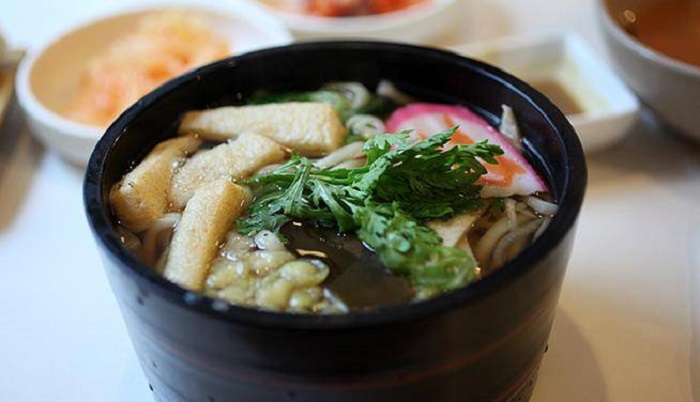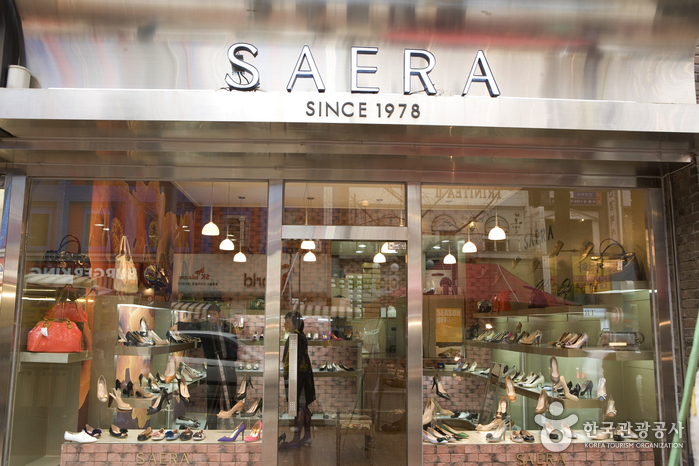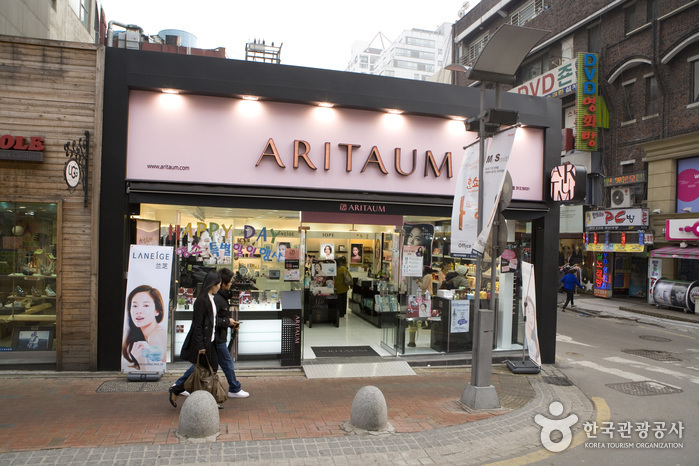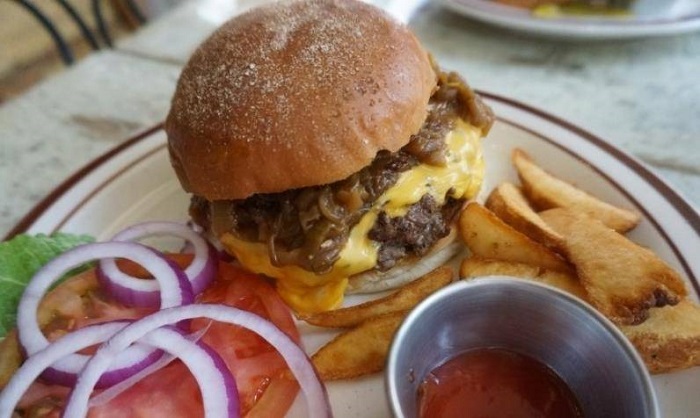Gami Bunsik (가미분식)
8.7Km 2021-03-26
2, Ewhayeodae 8-gil, Seodaemun-gu, Seoul
+82-2-364-3948
This snack restaurant near Ewha Women’s University has been around for over 40 years. This Korean dishes restaurant is located in Seodaemun-gu, Seoul. The representative menu is stir-fried rice cake with cheese.
E-Mart - Hawolgok Branch [Tax Refund Shop] (이마트 하월곡)
8.7Km 2024-04-22
167, Jongam-ro, Seongbuk-gu, Seoul
-
Saera - Ewha Womans University Branch (세라 (이대점))
8.7Km 2020-04-24
29, Ewhayeodae-gil, Seodaemun-gu, Seoul
+82-2-365-3646
Saera specializes in women's shoes. Its handmade shoes boast fashionable and meticulous designs appealing to young women. In collaboration with international designers, Saera offers trendy items and introduces European shoe sizes for increasing their accuracy and boosting comfort. Nice interior designs are also added bonus to shopping in Saera. It has become a favorite spot among international visitors.
Gobundari Market (고분다리 전통시장)
8.7Km 2023-12-22
8 Gucheonmyeon-ro 34-gil, Gangdong-gu, Seoul
Gobundari Market is a traditional market that takes care of food, clothing, and shelter for residents in Cheonho-dong. Because it is located in the center of the neighborhood, it is also a market where one can get a closer look into the daily lives of locals. One characteristic that stands out from this traditional market is none other than the murals. Murals of various themes that decorate the market area add eclectic energy to the quaint neighborhood. Like any other traditional markets, there are stores where visitors can purchase Koreans’ all-time favorite snacks.
Aritaum - Ewhayeodae Branch (아리따움 (이대점))
8.8Km 2020-02-19
45, Ewhayeodae-gil, Seodaemun-gu, Seoul
+82-2-313-0552
This branch of Aritaum is a large cosmetic store compared to other cosmetic stores. Located in the middle of the shopping area around Ewha Womans University, customers will be able to shop for diverse items in the clean, spacious store.
Olive Young - Ewha Womans Univ. Jungang Branch [Tax Refund Shop] (올리브영 이대중앙)
8.8Km 2024-04-18
43, Ewhayeodae-gil, Seodaemun-gu, Seoul
-
Ewha Womans University (이화여자대학교)
8.8Km 2023-07-04
52, Ewhayeodae-gil, Seodaemun-gu, Seoul
+82-2-3277-2114
Ewha Womans University is Korea's first women's university founded in 1886 by American Methodist missionary Mary Scranton. Ewha Womans University is also the most famous women's university in Korea and its name originates from Ehwa Hakdang, a name given by Empress Myeongseong in 1887. Ewha Womans University created a four-year university course in 1910, and in 1943, the name of Ewha was taken away during the Japanese colonial period and downgraded to a one-year school. In October 1945, the year of Korea's independence from Japan, it regained the name of Ewha and was promoted to a university with eight departments. Currently, it consists of 15 graduate schools, 11 colleges, and 67 departments, and there are 8 affiliated research institutes.
The street in front of Ewha Womans University is famous for shopping. This place is full of clothing stores and neat food that boast a popping sensation to suit the tastes of female college students. The shopping street in front of Ewha Womans University is a straight road that lies ahead of Exits 2 and 3 of Seoul Subway Line 2. Alleyways stretch out like branches around this street and are filled with various accessory shops, clothing stores, shoe stores, restaurants, cafes, and beauty salons.
9ounce Burger (나인온스버거)
8.8Km 2021-03-26
109, Gwanak-ro 12-gil, Gwanak-gu, Seoul
+82-70-8692-9020
It is a restaurant serving authentic American homemade burger. This restaurant's signature menu is house-made burger. This Western dishes restaurant is located in Gwanak-gu, Seoul.
Uireung Royal Tomb [UNESCO World Heritage] (서울 의릉(경종, 선의왕후) [유네스코 세계문화유산])
8.8Km 2021-06-03
146-20, Hwarang-ro 32-gil, Seongbuk-gu, Seoul
+82-2-964-0579
Uireung is the royal tomb of King Gyeongjong (reign 1720-1724), the 20th ruler of the Joseon dynasty, and his second wife, Queen Seonui.
King Gyeongjong was the first son of King Sukjong and Janghuibin, who was one of King Sukjong’s concubines. King Gyeongjong, who was born weak and anemic, died four years after becoming the king, without any great political achievements. Uireung tombs differ from the other royal double tombs in that they are not placed side-by-side. Instead, according to geomantic theory, one tomb has been placed directly behind the other one. The arrangement also shows that when making tombs, Korean ancestors did their best to protect the natural environment. Another feature of Uireung Royal Tomb is the stone fence raised using twelve stone posts. Each post has a letter inscribed, representing one of the twelve sibijisin gods.






![Uireung Royal Tomb [UNESCO World Heritage] (서울 의릉(경종, 선의왕후) [유네스코 세계문화유산])](http://tong.visitkorea.or.kr/cms/resource/80/2690680_image2_1.jpg)
 English
English
 한국어
한국어 日本語
日本語 中文(简体)
中文(简体) Deutsch
Deutsch Français
Français Español
Español Русский
Русский